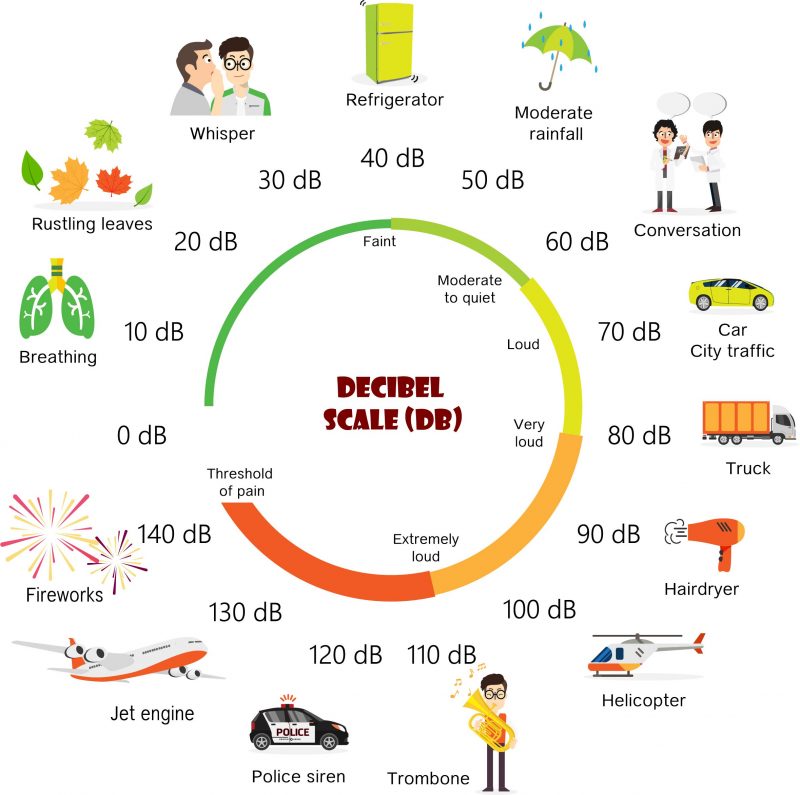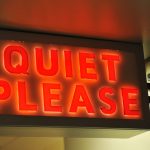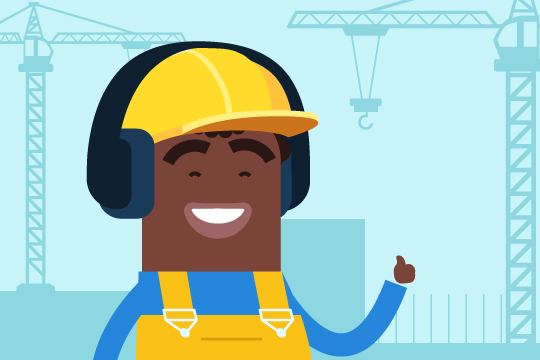We all know that exposure to loud noise can damage our hearing, but exactly how loud is too loud? And what do we need to do about noise levels to protect people at work?
Is ‘too loud’ defined in health and safety legislation?
The simple answer is ‘Yes’. Maximum noise exposure levels are defined in the Control of Noise at Work Regulations 2005.
Noise is measured in decibels (dB), and the regs set out different levels of noise where employers must take action. The dB scale is not a linear scale, and every increase of 3 dB doubles the noise levels, so what looks like a small increase in sound levels on paper can be a very significant increase in actual noise exposure.
Noise levels are presented in two ways. The first way noise levels are presented are averaged over a period of time and is given as dB(A) – this measures noise that has potential to gradually but permanently damage hearing over a long time. The second way noise levels are presented are as the highest (peak) level of sound and is given as dB(C) – this measures very loud instantaneous noise that can cause permanent hearing damage immediately.
| Action or Limit Values | Actions needed on reaching Action or Limit Values | |
|---|---|---|
|
Lower Exposure Action Values* |
Daily or weekly personal exposure of 80 dB(A)
Peak exposure of 135 dB(C) |
Employers must
|
|
Upper Exposure Action Values* |
Daily or weekly personal exposure of 85 dB(A)
Peak exposure of 137 dB(C) |
In addition to actions required for the Lower Exposure Action Value, employers must
|
|
Exposure Limit Values |
Daily or weekly personal exposure of 87 dB(A)
Peak exposure of 140 dB(C) |
Noise levels must be reduced to below 87 db(A) or 140 dB(C), taking hearing protection into account.
A noise level of 95 dB(A) may be acceptable if hearing protection provided reduces the noise at the ear to less than 87 dB(A). |
*Lower and Upper Exposure Action Values relate to noise levels without taking any hearing protection into account.
**Exposure Limit Values relate to noise levels at the ear once hearing protection is taken into account.

Can I tell if I have a noise problem without carrying out a noise survey?
All the information in the previous section is great but sounds a bit techy. How do you determine how loud is too loud without a noise meter and carrying out a detailed noise survey?
As a general rule of thumb, if you or an employee thinks there is a noise problem, then you need to investigate.
Your first step would be to carry out a listening check – the only equipment you need are your ears. Here are some signs that you need to carry out a more detailed noise level survey:
- You have to raise your voice to be heard
- You can’t hear or understand someone 3 feet away
- You use noisy power tools or machinery for over half an hour a day
- Speech around you sounds muffled or dull after leave a noisy area
- You have pain or ringing in your ears after you hear the noise (this indicates a high noise level so urgent action is needed)
To add a feeling to the probable sound levels, the HSE give the following guidance:
| You need to shout to talk to someone more than 1m away for more than half an hour a day in total | Probable noise level is greater than 90dB |
| You need to shout to talk to someone 2m away for more than two hours a day in total | Probable noise level is greater than 85 dB |
| Conversation with someone around 2m away from you is possible, but noise is intrusive (like on a busy street or in a crowded restaurant) for more than six hours a day in total | Probable noise level is greater than 80 dB |
I’ve found a noise problem in my workplace, what do I have to do about it?
If, from your simple checks, you have found that you have a noise problem in your workplace, then you must take all reasonable steps to reduce the risk of hearing damage to your employees.
Your first step is to carry out a risk assessment to decide what actions are needed to reduce noise and develop a plan to deal with the problem.
Your risk assessment should:
- Identify where there may be a risk from noise and who is likely to be affected by it (you may need to carry out a detailed noise survey to determine this).
- Estimate your employees exposure to noise.
- Identify what noise control measures and / or personal hearing protection is needed to reduce noise levels to below the action or limit values.
- Identify any employees who are at particular risk and those who need to be provided with regular hearing tests as part of a health surveillance programme.
Your risk assessment will then form the basis of an action plan needed to reduce noise to an acceptable level in your workplace.
How to reduce noise in the workplace

Employers need to take reasonable steps to reduce noise levels in the workplace, either by using alternative processes, equipment or working methods to make the work quieter or reduce the time people are exposed to noise.
Ensuring noise levels are kept to a reasonable level in the workplace can be achieved by taking any number of actions, including:
- Using a low-noise purchasing policy for machinery and equipment
- Housing noisy machinery where it cannot be heard by workers, wherever possible
- Maintaining machinery and equipment in accordance with manufacturers instructions to ensure good working order and minimise noise from developing faults
- Using Engineering and technical controls to reduce the noise produced at source
- Using screens, barriers, enclosures and absorbent materials to dampen noise levels
- Designing the layout of the workplace to create quiet workstations.
It is important to focus on reducing the overall level of noise in the workplace, so that the risk of noise related hearing loss is reduced across all people in the area.
Can’t we just make everyone wear hearing protection?

Sorry, but NO! Hearing protection, like all other forms of Personal Protective Equipment, is a last line of defence and should never be the first choice to mitigate a risk.
Hearing protection should on be used:
- Where extra protection is needed above what has been achieved using noise control
Or
- as a short-term measure while other methods of controlling noise are being developed.
If you do use hearing protection, it must give a suitable protection factor to reduce noise levels at the ear, must be compatible with other PPE, and you must give information and instruction to all those who need hearing protection about its use and limitations.
So what’s the key message to take away?

Noise related hearing loss is caused by permanent damage to the ears, and once hearing is lost it cannot be restored again (though hearing aids can help in most cases). It is possible to be exposed to noise that has potential to damage your hearing over a long period of time without actually being aware of the damage until it is too late. Carrying out simple checks will let you know if you have a noise problem that needs further investigation and gives you opportunity to prevent problems that could have a life-long impact on your colleagues.
If you found this useful, then sign up to my weekly H&S roundup to get updates, news and tips from the world of health and safety direct to your inbox.

